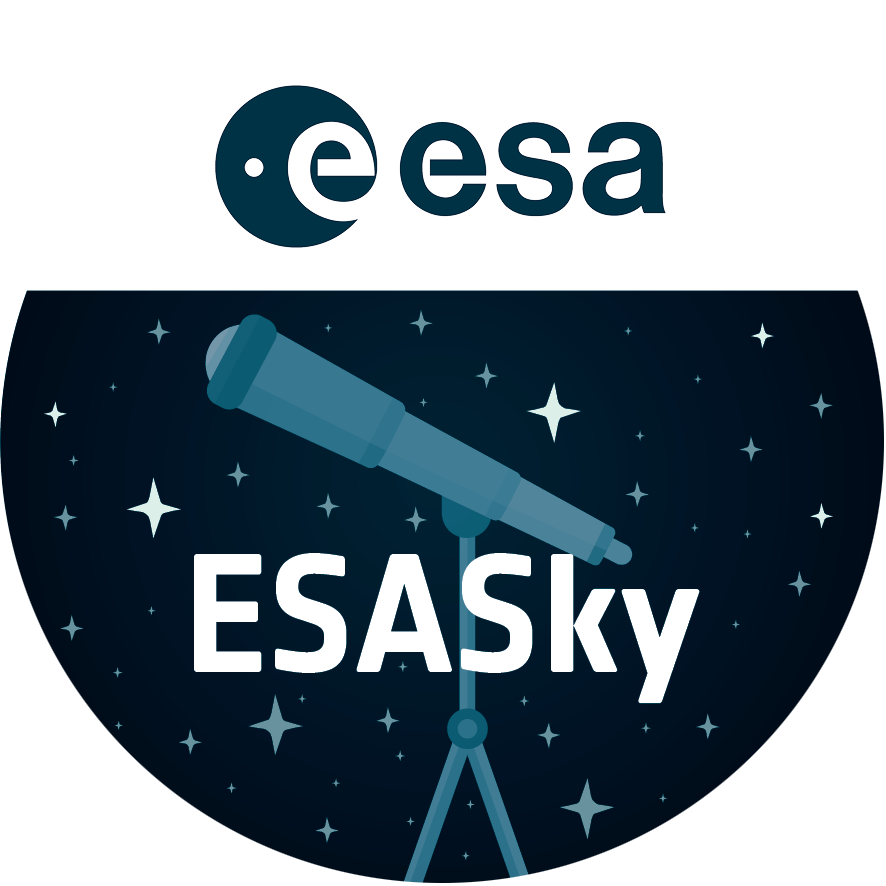
0
Iniciado
Gaia DR2 catalogue does not show in big fields
If you go to sky.esa.int/?action=goto&target=246.80577685364196%20-24.517894672834654&hips=AllWISE%20color&fov=6.616839145259243&cooframe=J2000 and try to show the Gaia DR2 catalogue, the query never ends..
Servicio de atención al cliente por UserEcho


Dear Becky,
We are working on improvements to our sky viewer and in the near future users will be able to visualise many more sources without compromising the speed of your browser.
In the meantime, if you want to obtain a very large number of Gaia sources and plot them in the sky, I would suggest trying pyESASky (our Jupyter widget) along with the Gaia astroquery module (and to at least apply some filters to obtain good quality sources). Here's an example that can be pasted into a jupyter notebook:
from pyesasky import ESASkyWidget
from astroquery.gaia import Gaia
esasky = ESASkyWidget()
esasky
esasky.setFoV(6.6)
esasky.goToRADec('246.805777', '-24.517895')
esasky.setHiPS('AllWise color')
# apply some quality filters: good astrometry where RUWE < 1.4 and good parallax > 0.
job = Gaia.launch_job_async("SELECT gaia.source_id, gaia.ra, gaia.dec, gaia.parallax, gaia.pmra, gaia.pmdec FROM gaiadr2.gaia_source as gaia \
INNER JOIN gaiadr2.ruwe \
ON gaia.source_id = gaiadr2.ruwe.source_id \
WHERE CONTAINS(POINT('ICRS',gaia.ra,gaia.dec),CIRCLE('ICRS',246.805777, -24.517895, 1.5))=1 \
AND gaiadr2.ruwe.ruwe < 1.4 \
AND gaia.parallax > 0")
Gaia = job.get_results()
Gaia
esasky.overlayCatalogueFromAstropyTable('Gaia', 'J2000', '#33c9cc', 5, Gaia, 'ra', 'dec','source_id')
A conesearch of radius 1.5 degrees brings back 88402 Gaia sources and when you send these to pyESASky, this many sources look like this in the sky (i.e. most of them merge into one another, one needs to zoom to see the individual sources):
Information on pyESASky can be found here:
https://www.cosmos.esa.int/web/esdc/pyesasky
and in this video:
I hope all this helps,
Regards,
Debbie on behalf of the ESASky team
Thanks Debbie,
That's great, but I can still not get to visualise the Gaia catalogue in this region without knowing how to narrow down tremendously the catalogue section. I tried reducing the parallax from the original range to 0 to 0.1 pc, which is ridiculously small already and because of the limitation to go below 4000 sources, I can still see no Gaia sources in the region.. What can I do if I do not know the proper motion of the region but want to visualise it?
Thanks again and congratulations again for the amazing tool, I use it now everyday.
Best wishes,
Becky
Dear Becky,
Can you please try working with Gaia DR2 data in this region again? In our latest release of ESASky we have a new strategy, and in large fields like the one you sent, ESASky shows the mission coverage and users are able to apply filters directly on the coverage. For example, the rho Oph field, about 6.6 x 4 degrees, has almost 2.5 million Gaia sources. If I do a rough filter on the pmra and pmdec (-7.5 to -3.5 and -23.7 to -19.7), this brings back less than 2000 sources, which are displayed in the sky and details given in the data panel. The performance/speed should also be better with this release.
Please let us know if this works well for you.
Kind regards,
Debbie on behalf of the ESASky team
Thanks Fabrizio,
I just tested this and it now takes 12 seconds, which is better than the 20/25 seconds you mentioned but still too slow for allowing practical for free exploration of the gaia data of different regions..
Cheers,
Becky
Dear Becky,
sorry for the delay. We have found a little issue in our databases. We have been able to optimize a bit the performances, but still a more work is needed in order to make queries faster. Now if you go in the area you have reported and overlay Gaia DR2 data and try to get the data again, after 20/25 seconds you will have it. I know it is not very fast, but I am confident that soon we could improve the performances and the responsiveness of our systems more.
Regarding the text appearing when ESASky is searching for Gaia data, you are right. That's why your suggestion is already one of the point we are going to discuss in the next ESASky internal meeting.
Please continue giving us your feedback, we really need it.
Kind regards,
Fabrizio on behalf of ESASky Team
Hi, I tried to find the Gaia DR2 data of the rho Oph region again today with the link above and it still does not load after many seconds.. Could you please have a look at this? It does not seem to be solved..
Also, It says is it loading the "Gaia DR2 metadata" while I would rather say "Gaia DR2 catalogue" since the catalogue is not metadata but the data in this case.
Thanks Fabrizio,
For your info, I just tested it today out of curiosity and after 30 minutes I still cannot see the sources..
I have firefox 61.0.1 (64-bit) running on a mac os x 10.12.6 (16G1510).
Cheers,
Becky
Dear Becky,
we have just finished the data synchronization on our backend. I have tested ESASky with the URL you have provided and it works as expected. I am really sorry for the inconvenience. We are working on to avoid more impact to the ESASky's users when performing maintenance on the internal infrastructure for the future.
Answering to your second question, we have already a task related to the "user notification" in our development backlog having high priority. I cannot tell you precisely by when it will be developed and made available, but I can assure that it will be processed very soon.
Thanks for using ESASky
Kind regards,
Fabrizio on behalf of ESASky Team
Thanks Belén,
When should I expect to be able to query it? And is there anywhere where I can be notified of disruptions and when should they be over?
Dear Becky,
thanks for reporting this. We had a network maintenance at ESAC this week and are currently undergoing a database synchronisation. This may be affecting your query. We apologise for the inconvenience.
Cheers,
Belén